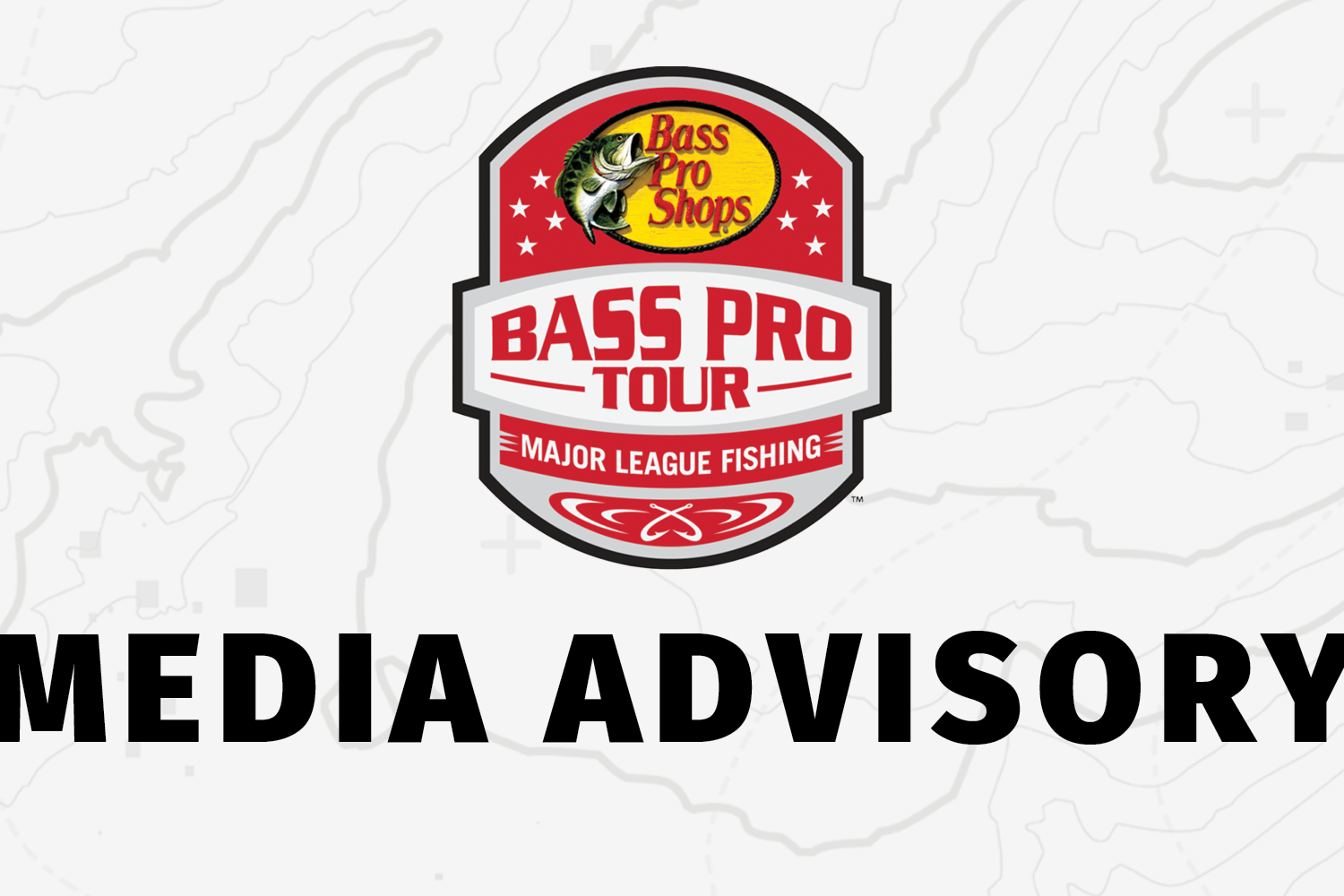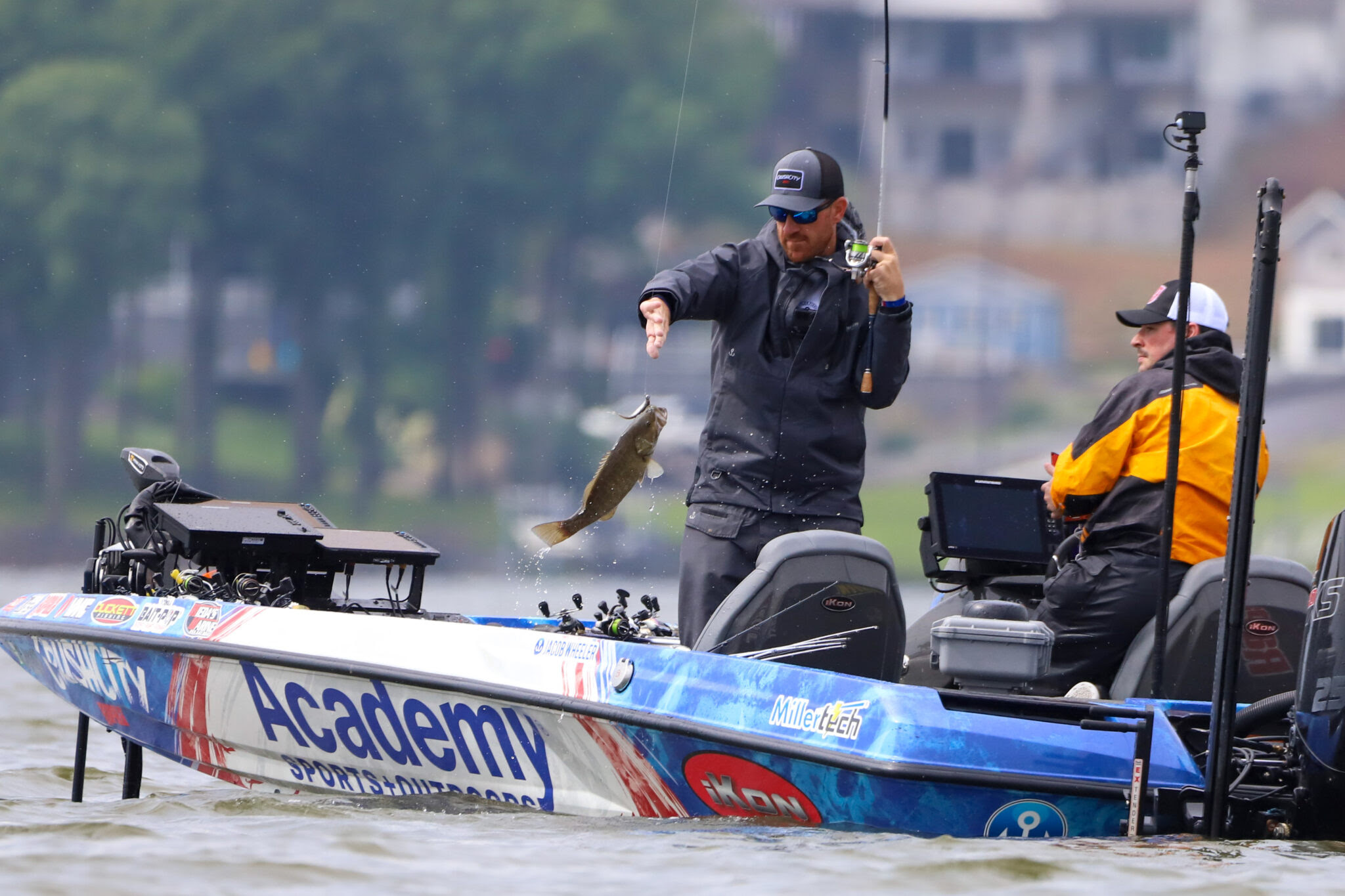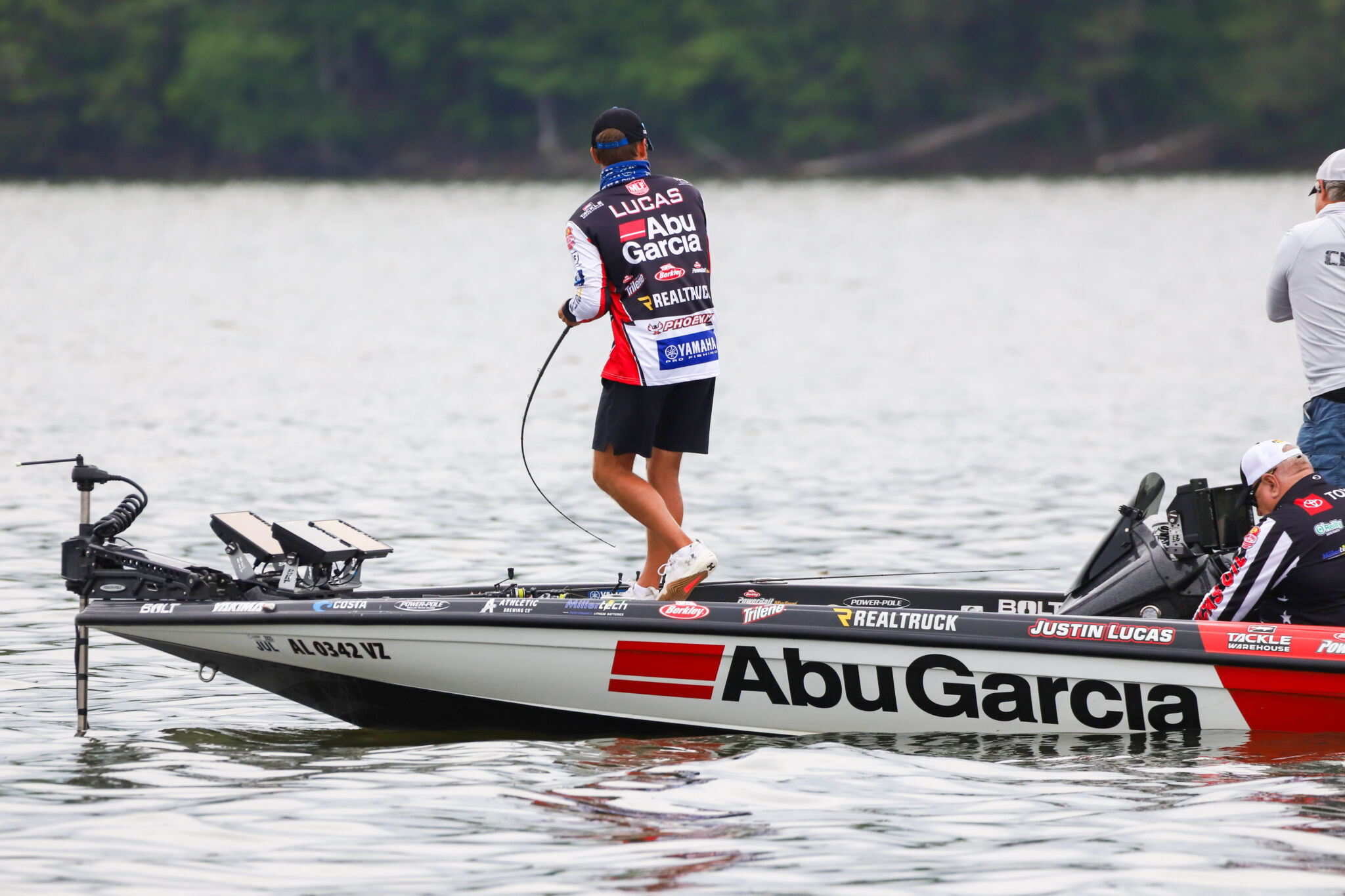“I’m gonna win it.”
Vance McCullough – AnglersChannel.com
Eric Jackson made the statement as flatly as one might say ‘I’m going to the store to buy milk and eggs.’
He was speaking of the upcoming Kayak Bass Fishing National Championship to be contested by 340 anglers on Alabama’s Lake Guntersville. That’s a huge field, culled from the most successful of KBF’s anglers over the course of a year. Then there’s the lake itself which just confounded most of the Bassmaster Elite Series field.
So why is Jackson so confident?
For starters, he is a 4-time freestyle kayaking world champion and a member of the 1992 U.S. Olympic team. As for the ‘angler’ part of the ‘kayak angler’ equation, Jackson is a veteran of the FLW Tour, now known as the MLF BIG5.
But Jackson’s confidence is buoyed by a paddlecraft of his own design: the new Apex Tyr. It’s the only model offered by the nascent endeavor, Apex Watercraft. Jackson made waves in the kayak fishing industry when he offered models under his namesake company, Jackson Kayaks. “I still own stock in Jackson but I’m not running the company in any way. I started Apex because I wanted to come up with a super lightweight carbon fiber boat and push performance boundaries in a lot of the areas that plastic boat manufacturers just weren’t doing and can’t really do with plastic anyway. There are 37 companies making rotomolded plastic fishing kayaks out there. There’s only 1 making a carbon fiber one.”
Jackson assembled a team of experts – including Russ Emanis who led the Lockheed Martin R+D and manufacturing of the F-22 Rapture fighter jet with carbon fiber, infusion processes – to build Apex kayaks in his home state of Tennessee from a new location completely separate from the Jackson factory.
“Having a really lightweight boat just opens up so much stuff,” says Jackson. “For example, I just fished the KBF Super Trail Tournament on Lake Wheeler and I would have won except for a technical foul. I had a 2-inch penalty for two fish with their mouths slightly open (in the required scoring photographs). Otherwise, I had the biggest 10 fish. I caught about 50 fish a day fishing on a section of the creek where John Cox won the FLW Cup a few years ago but I was fishing about 8 miles upstream from where he was.”
The writer of this article followed Cox up said creek and I can tell you it got to the point where a kayak would have been required to go much further. Cox giggled about it at the time, “I’m so far up the creek that it doesn’t even show up as blue on the map.” Cox went further in an aluminum boat than anyone else in the field could do in their fiberglass models. Jackson was able to use a paddle version of the now famous Cox approach to far surpass what his competitors could do in heavier craft – kayaks no less.
Jackson says, “In a 2.4-mile section of the creek I had to portage over and around trees about 50 times. It was choked with tornado trees and whatever the whole way. At times there wasn’t enough water to paddle a kayak. Those fish are never getting fished for. It was catch, catch, catch the whole way.
“It was super awesome. That boat made it possible. It would have been too hard to take a plastic boat.”
It is often said that dogs look like their owners and that great teams take on the personality of their coaches. Eric Jackson’s stature is not overbearing but he is solidly built, powerful, with no dead weight. The Apex Tyr follows this elegant, highly functional form.
At 40 pounds, the Apex needs just a sheet of water to float. Everything else about the craft is minimal as well, except the price, but more on that in a minute. The word that comes to mind when looking at the boat is ‘clean’. It features a uncluttered layout that is deceptively storage-friendly for bass anglers who carry multiple rods and bags of gear.
Given his background, Jackson is more comfortable paddling than pedaling and he has designed a boat that reflects this with no receiver or hole for a drive. In fact, there are no holes whatsoever in the smooth bottom of the Tyr. No scupper holes. This is part of the magic that makes it fast and quiet. The boat’s design runs water right out the back end so no need for the scupper holes.
There is a mounting plate on the rear that will accommodate a Power Pole Micro or a Torqeedo electric motor for those who want to go very far very fast. “If I want to fish open lake, if I put a Torqeedo 1103 which is about a 3-hp electric motor, it drives at 7-and-a-half miles an hour. If you put it on a Hobie or a Jackson it will run maybe 4-and-a-half miles an hour. I can run all over the lake faster than anybody else can.”
As for graphs and such, “You can flush mount electronics on the dash. Electronics on a kayak are always in the way – to the side or between your legs and everything catches on them. Our dashboard puts them out of the way and makes it really convenient.”
Being a carbon fiber craft, an owner does not want, or need, to drill holes in order to mount the aforementioned electronics. “The boat comes ready to go so if you’re drilling, you’re not using the boat right,” notes Jackson of the mostly custom-built watercraft that will also be produced in greater volume to meet the demand of a growing dealer network soon.
There are stainless steel inserts mounted behind the swivel seat so that additional gear can be mounted or lashed to the deck. “You can put any Ram Mount you want on there. What you haven’t seen yet – and we finally sorted it out – is where to put the beer,” laughs Jackson. “I was super stressed about getting our beer holder right. We have an accessory called the Beer Buddy and, basically, we have a swivel seat, and the swivel seat is like, a whole game-changer in its own, but you lift the seat out and put this Beer Buddy on the seat pole and it sticks out either just between your legs in front of you, or it can rotate 360 degrees anywhere you want to keep it. You can put multiple ones on if you want. That’s not on the website yet but it’s coming.”
To maintain a low profile, the Apex is keeps additional fishing rods at the ready in a horizontal orientation as opposed to the vertical fashion in which many anglers now transport four or more sticks that wave and telegraph their approach to wary shallow water fish. “That might look cool, but I can’t deal with that ever,” says Jackson. “You’re standing up and try to flip behind you, that’s the last place you’d want to have them. If you make a cast and catch the rod and backlash the crap out of it . . . anyway.” Jackson’s frustration with the vertical rod storage that is standard practice in kayak fishing is common among bass boaters who transition into the smaller vessels. It’s a holdover from the saltwater world where kayak tournaments were pioneered before being adapted to bass fishing. It is time for kayak bass tournament anglers to catch up and lay the rods horizontally as we always have, so this may be my favorite feature of the Tyr. In the Apex, “Rod holders are parallel alongside the seat, facing backward inside the boat. You can put 3 or 4 on each side but it’s super awesome convenient to put 2 on each side and then, the ones you’re actively using, you lay them forward on the dash. If you look at the angle and depth of the dashboard, the rods lay perfectly on that. Super open. Super easy to access.”
Storage is abundant and always within reach from the high pedestal seat that again, swivels to grant total range of motion around the boat. “That pedestal is open in the front for tackle storge beneath your seat. On the back of the seat is a recess with a couple of paracords that hold a small dry box, maybe your phone, wallet, whatever in there.”
The main storge compartment is under what amounts to the hood on this vehicle. It is kept closed with a quiet magnet system that makes for easy one-handed opening. “The hatch houses electronics, but also, you have access to that whole front hatch for storage. It’s really big,” says Jackson.
To aid in boat positioning, Jackson invented a thing. “We have two additional 420 inserts on the gunnel where you can mount a Ram ball or whatever but we’re using it for a new invention I created called a Side Kick. It’s a drift control paddle holder mechanism. You just drop your paddle in, and your blade goes down in the water and slows your drift by about 50% and you can angle the blade to help control the direction of your drift. If you want to grab your paddle you just pick it up and, off you go. I haven’t really promoted that yet, there’s no footage of it. We probably won’t promote that until the end of October when we’re shipping them.”
The Side Kick will be an important add-on as Jackson admits that, due to its light weight, the Apex is more susceptible to being blown around on the wind. The boat’s low profile will help combat this though, as will a shallow water anchor which, again can be mounted to the back via existing inserts. Then again, in the skinny margins of water far up the creeks where Jackson prefers to venture, wind is much less of a factor to begin with. Also, course correction is much quicker, easier and quieter in the bantam weight boat. “If you’re in a heavy boat and the wind hits, it’s gonna take longer to move it (back into position) but on the other side, every stroke you take, every movement takes way less energy to straighten out, to position yourself or whatever in a lighter boat.
“The wind is still gonna blow either way.”
Jackson also teased another accessory to come, the Tailgate, which closes off the back end of the otherwise open cockpit for those who are concerned about following waves or who load their boat before they drag it to launch and don’t want stuff rolling out of the back.
He also ran down the various fin options that affect tracking, especially helpful for offshore fishing. They are made of carbon cork so if you knock one off it is not necessarily lost.
Cosmetics on the Apex are breathtaking. The depth and brilliance of the glossy finish rivals that of any big bass boat. The ultra-durable topcoat also protects the finish. “We have a proprietary coating that has never been used in composites before. My head molder figured out how to mold-in this coating. It’s like a polyurea coating, the same stuff you use for truck bedliners – super tough stuff but this is a clear coat. It looks perfectly clear. You see the carbon through it. It’s like glass. It’s incredibly high abrasion resistant. Like my boat, I’m just dragging it around through the woods, over logs. Remember, the boat is super light so if you don’t have it heavily loaded down, there’s hardly any weigh to it any way. No biggie.”
You can wrap it if you like. “The wrap template has been designed and our wrap guy will design a custom wrap in whatever colors you want with your name on it or whatever it is you want on the boat and that’s part of the package. It’s pretty sweet. If you look on-line you can see my latest one. It has checkers and my name. We have a bald eagle. We have camo.”
The premium boat comes with a premium price tag. You might need financing. Seriously. “I’m selling $11,000 boats and people are buying them. It’s not for everybody. If you’ve got the money and you want the best thing, it’s there.”
In addition to sticker shock, there has been backlash against the radical design of the Apex. “The response was pretty harsh,” admits Jackson. “People looked at it and said, ‘that’s not a tournament boat’ and ‘anything you have to paddle is not a tournament boat, you should be able to pedal it’. People have just gotten used to doing it a certain way and right now, nobody is thinking outside the box.
“What they don’t understand is, this is the winning tournament boat. This blows your ‘tournament boat’ out of the water as far as winning tournaments. My rod holder system, my electronics mounting system, the weight, the speed. My theory is, and I’m a fan of pedaling, but if you want to win a tournament and you’re allowed to use a trolling motor, why are you pedaling again? Mine is turn-key for electric or paddle. I’m not sure why, if you want to win a tournament, ‘you’ve got to pedal’.”
Readers will want to check out the Apex channel on YouTube to see a walk through as they build one of these boats. The materials, the craftsmanship and the team that executes the build is remarkable.
Then again, if you want to meet the boat of your dreams in person, “At Nationals (Lake Guntersville, October 7, 8 and 9, 2020) we’re gonna have an after party with 40 cases of Fat Tire Beer (after the final day the 9th). We’ll also have BBQ and be cooking food for people. That will be the first chance for people to really touch and feel the boat.
“In theory, I’ll have won the Nationals. I’m pretty confident in my chances at this event.”


















